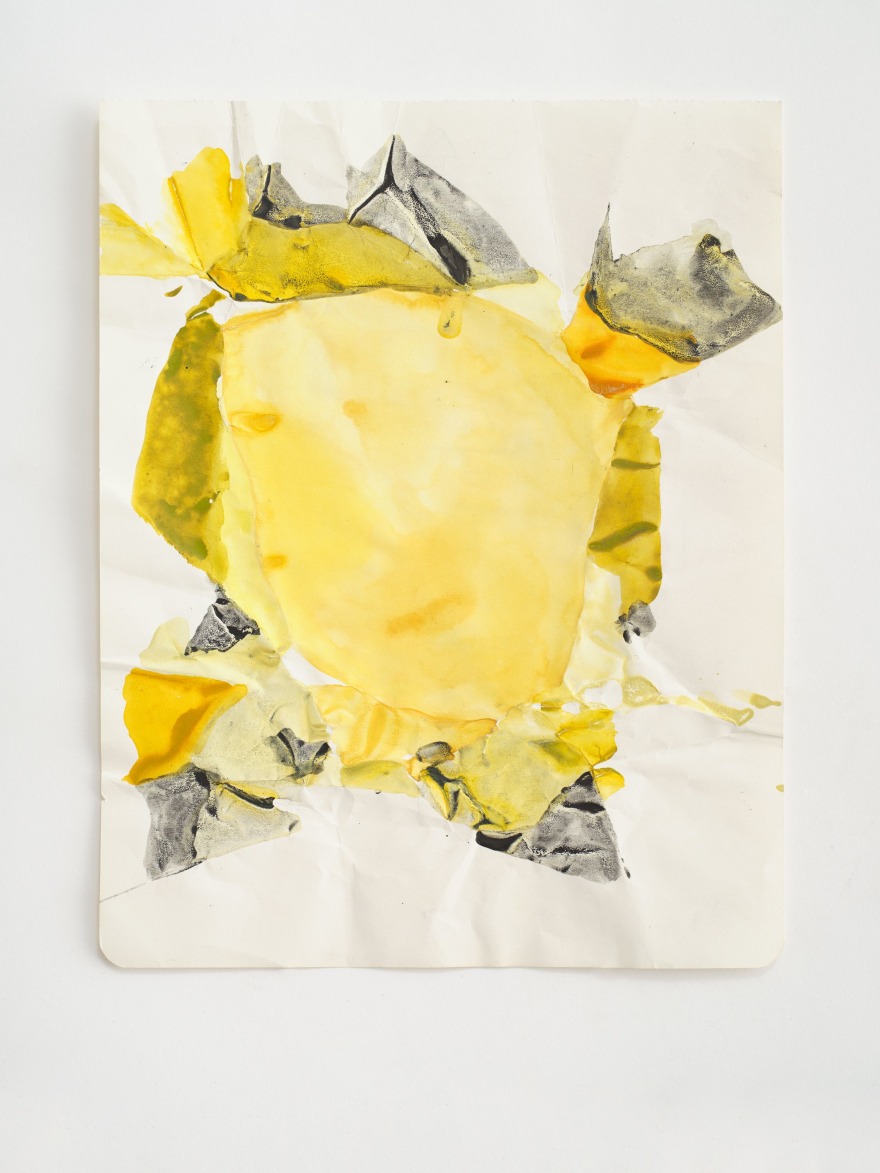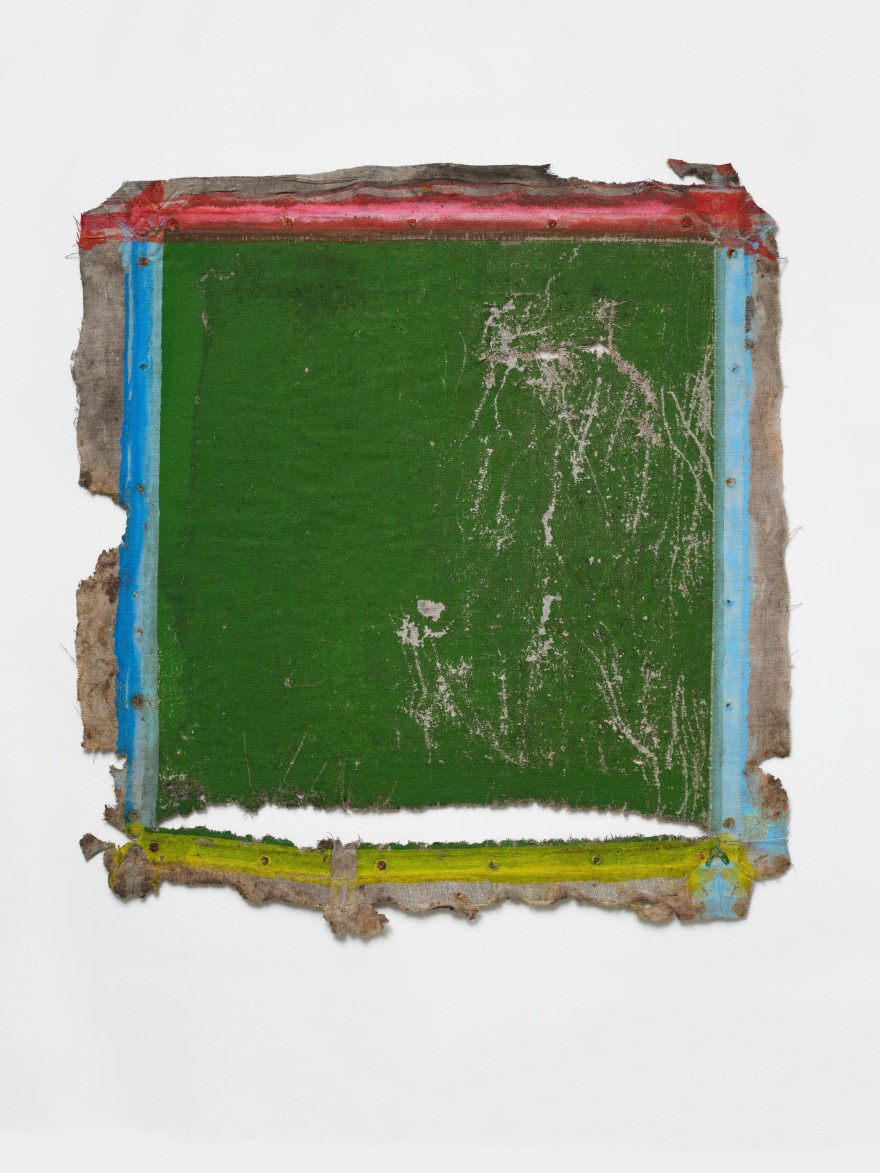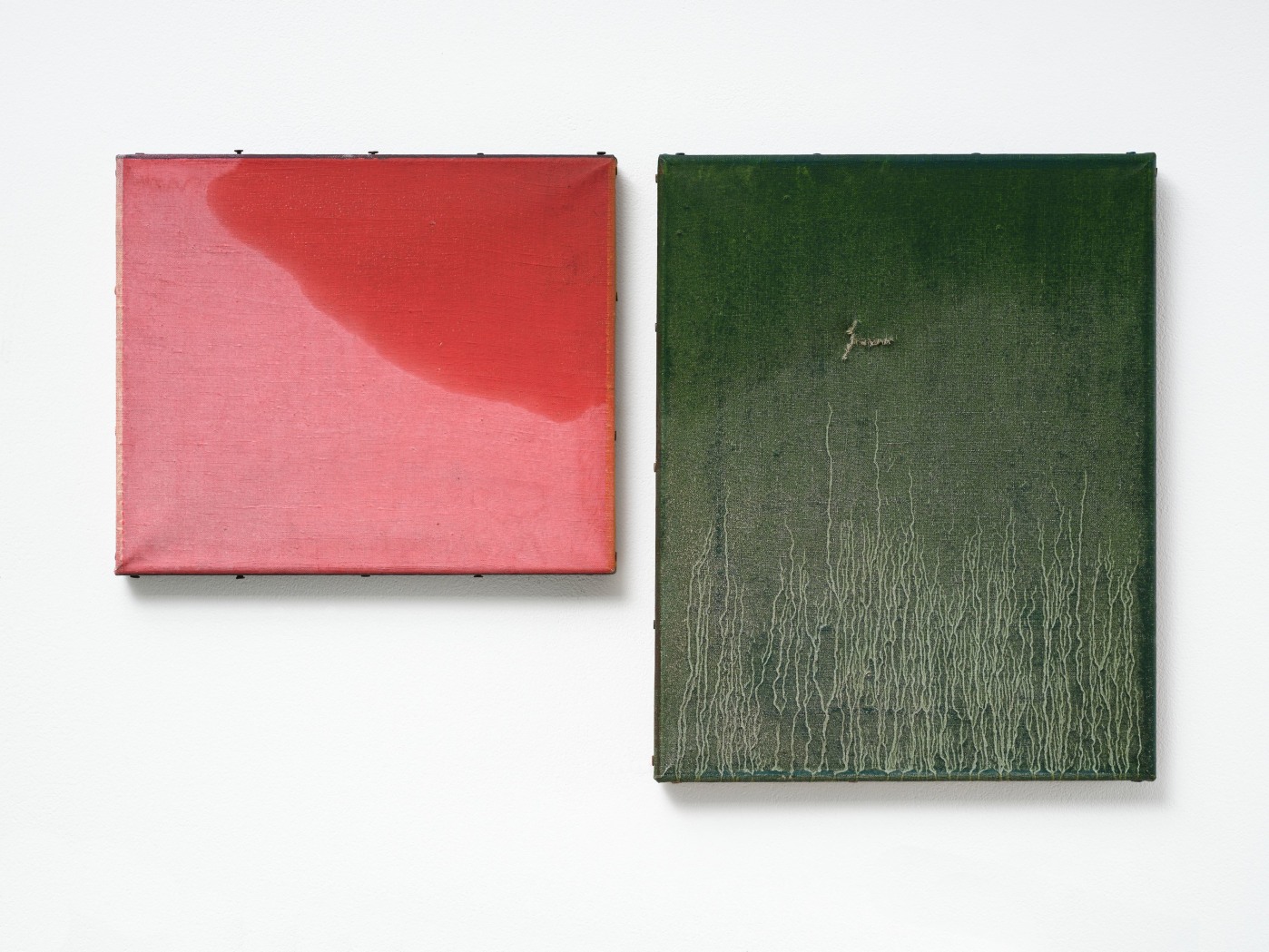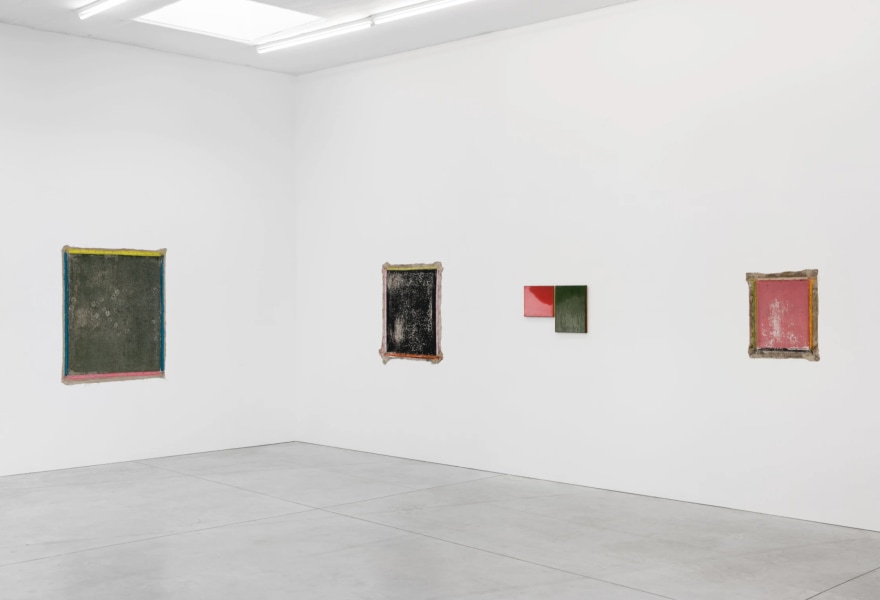24 september 2024, Yves Joris
What lives beneath the asphalt?
Some exhibitions have the power to stop you in your tracks, to overwhelm you with more questions than answers. Under the Pavement the Soil is Dreaming of Grass, the latest exhibition featuring work by Jeff McMillan at the Kristof De Clercq Gallery, is one such exhibition. The title speaks volumes: what happens beneath the hard surface of asphalt is a story in its own right. Underground, the grass lies dormant, waiting to break through. McMillan's work resonates with that same tension between control and the quiet, tireless workings of nature. Yet, there is a significant difference. While the grass under the asphalt fights to break through, McMillan allows time and nature to take their course on his canvases until they take on a life of their own.
It is my first time visiting Kristof’s gallery and he proves to be a captivating storyteller, providing a description of each painting without ever losing sight of the overarching theme. On entering the gallery, it immediately becomes clear that McMillan does not tread the traditional paths of painting. Instead, his canvases bear traces of their past, relics from another time: they are not only shaped by his hands, but also by nature itself. By exposing them to the elements—rain, sunlight, snails and even animals like foxes—he allows his paintings to mature over the course of years. What you see is not merely the result of his hand, but also of time and chance encounters with nature.
The title of the exhibition becomes immediately clear as the work is further explained. Just as the grass patiently waits beneath the asphalt, the canvas is also given time to transform. The painting becomes a living object, evolving and in continuous motion, even when it seems to be finished. McMillan's work is therefore both organic and layered: it tells the story of time, weathering and unpredictable natural forces.

Jeff McMillan, Untitled (SPH 2), 2019, Kristof De Clercq gallery
Spontaneous encounters with nature
Coincidence plays a key role in McMillan's work. His canvases are not perfect compositions in the traditional sense, but he invites nature to be an active participant in the creation process. Rain, sun and even animals become co-creators. For instance, in some work, you can see the shiny trails left by snails, as if they had made their own abstract brushstrokes, while on other canvases, you see the footprints of a fox that walked across them. McMillan gives nature the freedom to complete his work, making each canvas unique. Nature takes control while the artist steps back and observes. This interplay between intention and coincidence leads to a fascinating result. His paintings tell not only the story of what he created, but also of what he has allowed to happen.

Jeff McMillan, Topos (Wales 5 / Slate in Deep Yellow), 2019, Kristof De Clercq gallery
A meditative approach to time
Nothing happens in an instant. His work is not completed in a matter of days or weeks, but literally over years. Some canvases have hung outside for as long as five years before McMillan considers them ‘finished’ During that time, the work continuously changes: paint peels off, colours fade and cracks appear in the canvas. The passage of time is not only a theme, but an essential part of the work itself.
This slow process of change has an almost meditative quality to it. McMillan does not intervene, but waits patiently. He observes how nature and time leave their mark on the canvases. The result is a series of paintings in a constant state of evolution. They do not reflect the haste and control that often dominate the art world, but patience and acceptance.
From minimalism to meaningful decay
McMillan's work has its roots in minimalism: he works with limited means, simple forms and raw materials. But there is a significant difference. While minimalists often strive for purity and perfection, McMillan embraces the imperfect and incomplete. His canvases are unprimed and deliberately exposed to the elements. They are affected by factors over which the artist has no control. The resulting decay is not something to be repaired, but rather an integral part of the work.
One of his most striking works shows a canvas that, after years of hanging outside, has developed cracks and peeling paint. The colours have become dull and faded, as if slowly returning to their original, monochromatic state. Instead of viewing this as a flaw, McMillan embraces it as a sign of transformation. His work raises questions about the value of decay and how we can find beauty in the slow disappearance of something that was once full of life.

Jeff McMillan, Untitled (Green / With Foxes H-224), 2024, Kristof De Clercq gallery
The tension of the visible
The title of the exhibition forms the core of the story McMillan tells. Under the Pavement the Soil is Dreaming of Grass perfectly encapsulates the tension between what is visible and what remains hidden. The asphalt symbolises human control, an attempt to keep nature in check. But beneath that surface, the grass continues to grow, searching for a way to break through. McMillan's work reflects that same process: each piece initially appears to be controlled by the hand of the artist, but beneath the surface, it is time and nature doing the real work.
This gives his paintings an organic quality. At first glance, they seem resigned to their fate, but they are constantly in motion, like the grass patiently waiting for its moment. Nature continues its work, even after the artist has left the scene. This fluid and open approach in which McMillan both controls and abandons, makes his work so fascinating.

Jeff McMillan, Tainted Love (H-225 & H-226), 2024, Kristof De Clercq gallery
Art as a journey through time
I must admit that at first, I wasn’t sure how to look or feel about his work. But as always, time is a good advisor. McMillan’s work is a quiet but powerful ode to time, as well as to decay and the unpredictable forces of nature. By allowing his canvases to hang outside for years and letting nature take its course, he shows us that art is not an endpoint, but a continuous process of change and transformation. Like the grass beneath the asphalt, his work – slowly but surely – continues to evolve.
McMillan's work is patient, modest and profound. It invites us to reflect on the beauty of imperfection and let time do its job. This exhibition reminds us that art is not always about control and perfection, but there is also immense power in letting go. Under the Pavement the Soil is Dreaming of Grass shows us that like nature, art is always in motion, even when it appears to be standing still.

Jeff McMillan, Kristof De Clercq gallery
